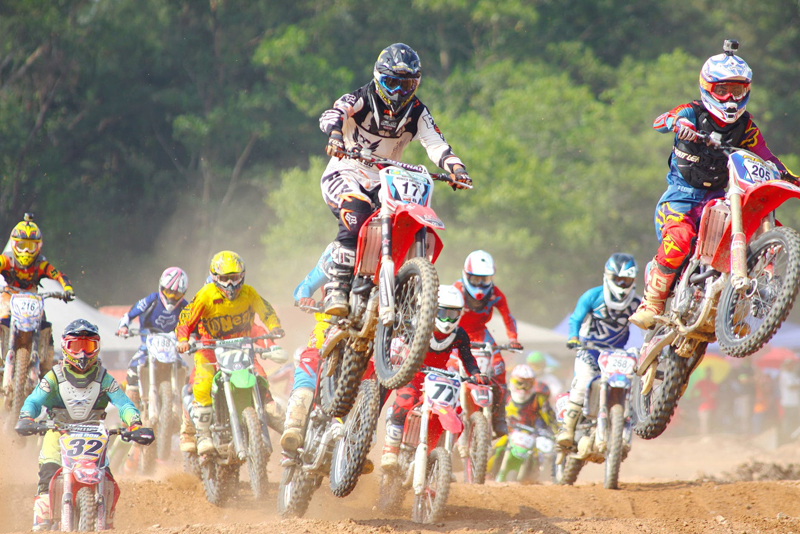Driver Penalties

The stewards are constantly on the lookout for drivers making mistakes and committing serious offences as a race progresses. They will announce an investigation into an incident, and then reach a decision on whether the incident deserves a penalty or not. These are some of the more common penalties that are handed out during a race weekend.
During the Race
Drive Through Penalty – A driver has three laps from the time of notification to return to the pit lane and drive straight through and out the other side. He can’t stop for fuel, tyres, or any mechanical interference. It is simply a trip through the pit lane. The penalty in this is that the pit lane has a speed limit which means the rival cars will be going full speed down the home straight, whilst the driver has to negotiate the pit lane. This is often given for causing an avoidable accident or blocking another driver.
Stop Go Penalty – This is similar to the drive through but a driver must stop at his pit box, and be held in place for a certain length of time – usually 10 seconds.
Black Flag – A driver is immediately retired from the race, and must return to the pit lane to take no further part in proceedings. We have seen this in very serious conditions, for instance, when a driver ignores the red light at the end of the pit lane.
Post-Race
Fine – Quite often, if a misdemeanour hasn’t actually affected anyone else and is simply a matter of discipline, the stewards will issue a fine. This often occurs if a driver has been speeding in the pit lane, or not adhering to the white lines.
25-Second Penalty – After a race has finished, or if a drive through is issued in the last five laps, the stewards can add 25 seconds to a drivers finishing time. Depending on the field spread during a race, this can drop a driver down the finishing order quite a long way.
Grid Drops – These can be imposed for serious offences, but also when a driver has to change a long life component in his car. Switching out the engine for a fresh one when it has only completed one race of a two-race cycle will result in a grid drop. The standard drops are 10 places, or 5 places. This means that at the next race weekend, wherever the driver qualifies he will have the specified number of places added to his start position. So, to qualify 2nd with a 5 place grid drop would see him start 7th. This can be a particularly harsh penalty, and involves one race weekend’s incidents in the following race’s action.
During the Race
Drive Through Penalty – A driver has three laps from the time of notification to return to the pit lane and drive straight through and out the other side. He can’t stop for fuel, tyres, or any mechanical interference. It is simply a trip through the pit lane. The penalty in this is that the pit lane has a speed limit which means the rival cars will be going full speed down the home straight, whilst the driver has to negotiate the pit lane. This is often given for causing an avoidable accident or blocking another driver.
Stop Go Penalty – This is similar to the drive through but a driver must stop at his pit box, and be held in place for a certain length of time – usually 10 seconds.
Black Flag – A driver is immediately retired from the race, and must return to the pit lane to take no further part in proceedings. We have seen this in very serious conditions, for instance, when a driver ignores the red light at the end of the pit lane.
Post-Race
Fine – Quite often, if a misdemeanour hasn’t actually affected anyone else and is simply a matter of discipline, the stewards will issue a fine. This often occurs if a driver has been speeding in the pit lane, or not adhering to the white lines.
25-Second Penalty – After a race has finished, or if a drive through is issued in the last five laps, the stewards can add 25 seconds to a drivers finishing time. Depending on the field spread during a race, this can drop a driver down the finishing order quite a long way.
Grid Drops – These can be imposed for serious offences, but also when a driver has to change a long life component in his car. Switching out the engine for a fresh one when it has only completed one race of a two-race cycle will result in a grid drop. The standard drops are 10 places, or 5 places. This means that at the next race weekend, wherever the driver qualifies he will have the specified number of places added to his start position. So, to qualify 2nd with a 5 place grid drop would see him start 7th. This can be a particularly harsh penalty, and involves one race weekend’s incidents in the following race’s action.
This site needs an editor - click to learn more!
You Should Also Read:
Dangers of the Pit Lane
Guide to F1 Flags
The Accident Process
Related Articles
Editor's Picks Articles
Top Ten Articles
Previous Features
Site Map
Content copyright © 2023 by Christine Blachford. All rights reserved.
This content was written by Christine Blachford. If you wish to use this content in any manner, you need written permission. Contact
BellaOnline Administration
for details.


